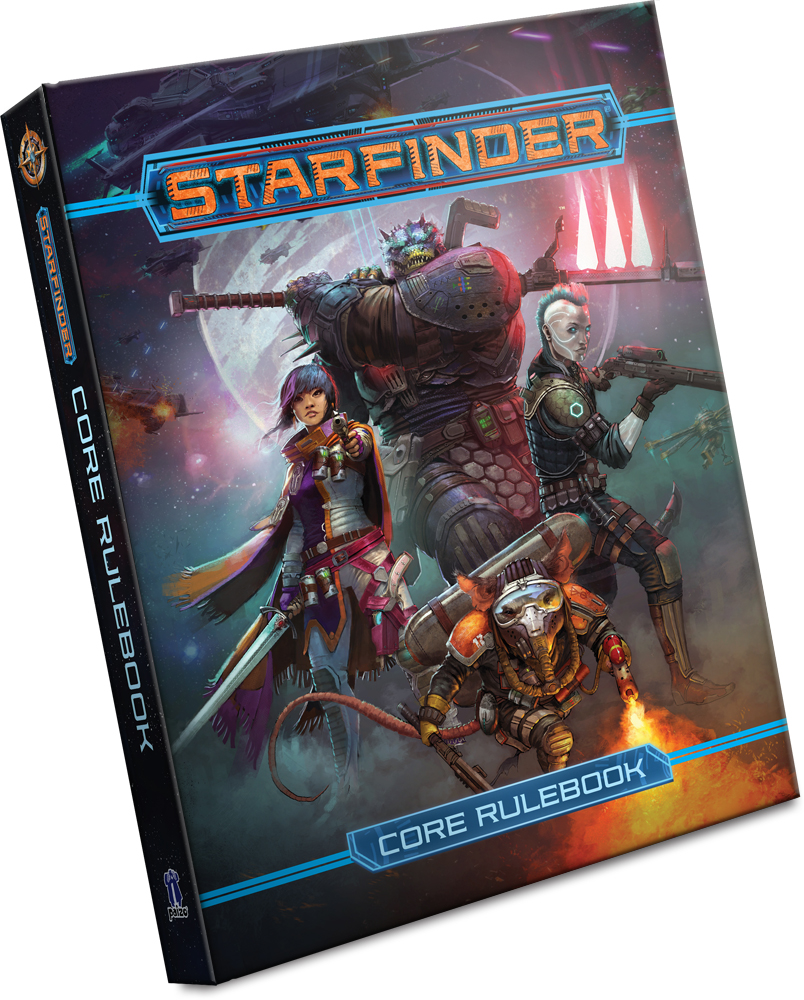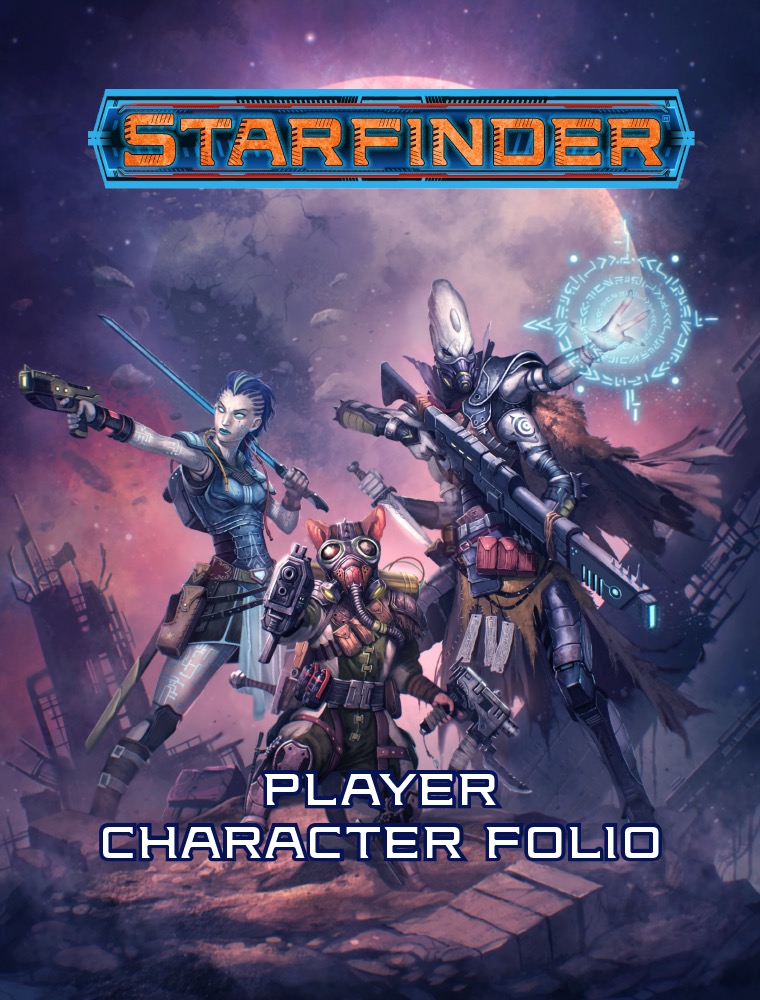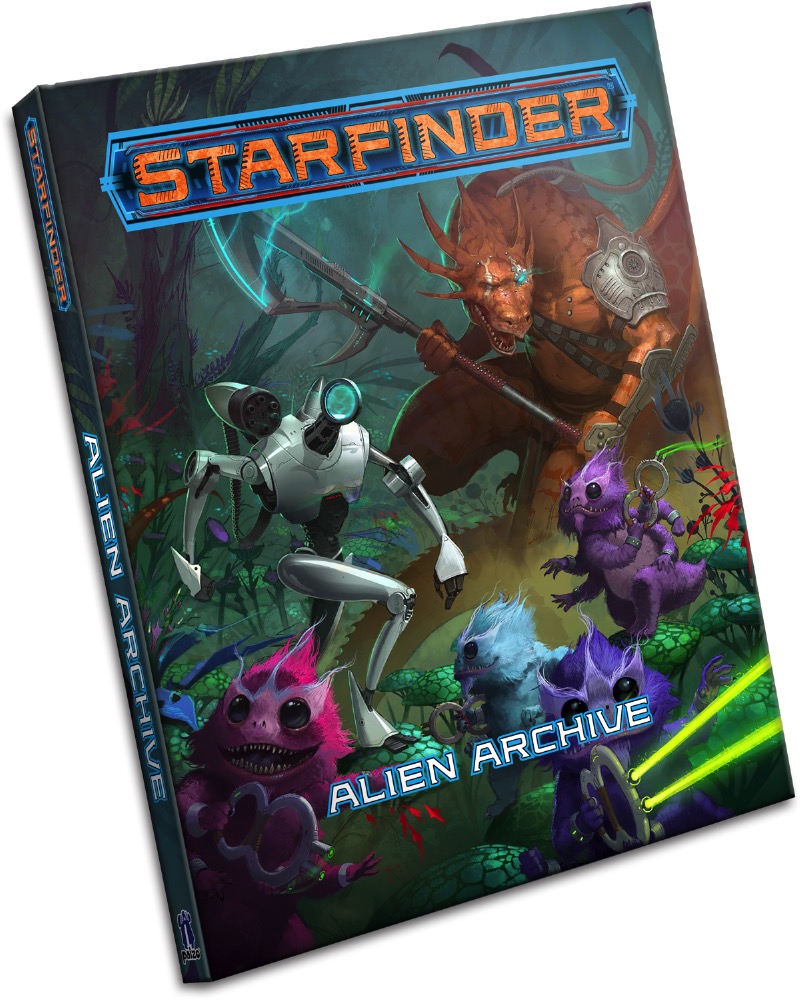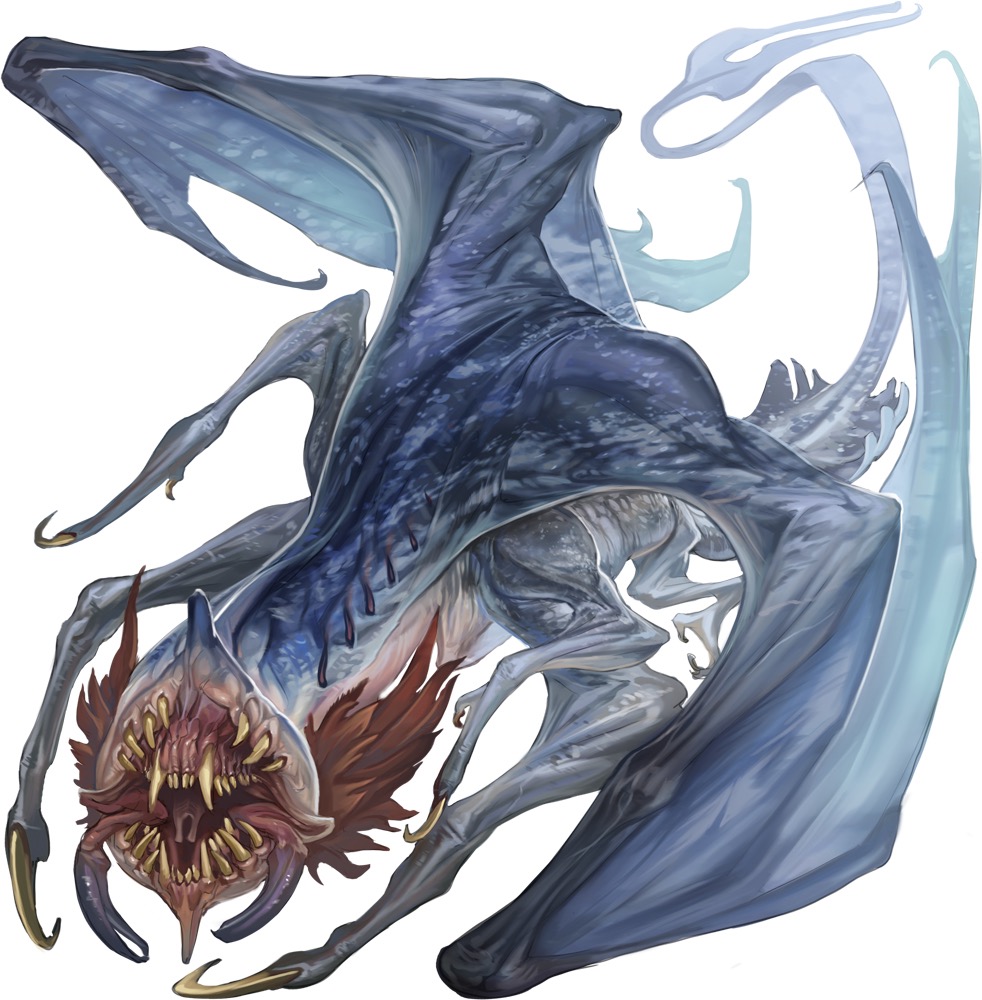In early 2010 one of my first posts on this blog was a review of Pathfinder. It is only fitting that seven years and a few months later I review Paizo’s newest hit Starfinder.
Allow me to muse a little before I get to the meat of this review.
If you read my review on Pathfinder back then, I was really enamored with the system. Having tried and disliked D&D 4th edition, I was thrilled someone was continuing and expanding upon the 3.5 rules which all my gaming group enjoyed. Fast forward to now, and as much as I like Pathfinder, and continue to buy products from Paizo such as Pawns, Flip-Mats and Map Packs, I’m no longer playing the game. My current fantasy campaign uses the D&D 5th edition rules. Some of my players still play on Pathfinder campaigns and long for the character options and builds they can do in Pathfinder.
Over the past seven years I’ve come to appreciate simpler, more streamlined systems, and while Paizo does a lot to make running the game easier through tools and books like the NPC, Monster and Villain Codex, and their terrific Pathfinder Reference Document, keeping up to date with all the Feats, Spells, special rules, character classes, etc., is a daunting task. As a GM you don’t have to use them all, but you need to check character builds, make sure you create challenges appropriate to their powers, and fun for the players. I felt that running Pathfinder was too much of a hassle. I liked what WotC did with D&D 5th edition and moved on to that system.
Still I long for the kind of support Paizo gives Pathfinder, I know that my players want more options that the ones 5th edition offers, and I’d be more than happy to run Pathfinder 2nd edition if they cleanup and simplify the system. When Starfinder was announced I was sure this was a prelude to a new edition. Testing out the waters, fiddling around with the rules, and then using that for an updated version of the flagship game. I pre-ordered Starfinder, and thanks to Hurricane María, had some free time to read the book. Did I get what I expected? Read on and find out…
I’ll be reviewing the Starfinder Core Rulebook, which I own in PDF and print, and commenting on the Alien Archive, which I own in PDF and have pre-ordered in print, and the Player Character Folio which I got in PDF.
First some general impressions.
Starfinder seems to be a hit! Paizo continues to contribute to the OGL community and third-party support to the game is terrific. The core book is beautiful. From the layout to the art it is up to par with other Paizo products. You won’t be disappointed in this regard. There were some issues with the binding (mine is holding up, but I’ve only read it and not exposed it to the rigors of the game table) but Paizo addressed this issue as best as they could. I just hope that doesn’t eat too much into their profits from the book.
Paizo continues offering PDF copies of their books at a reasonable prize, and on their website, you can see that a digital rule reference should be available sometime in the fall. The fine folk at the Open Gaming Network already have a Starfinder SRD. Is Starfinder for you? If you like Pathfinder, this science-fantasy take on the rules is for you! If you like simpler systems, that require less prep time for the GM and are easier to pick up by thr players, well the answer comes with some caveats.
What did I like and not like?
 I loved that they changed action economy. No more strings of attacks with a declining chance to hit. To me that’s a SIGNIFICANT improvement. They did not simply make the game Pathfinder in space, they have new races (all of which I like), and classes (more of a mixed bag for me), that make this feel like new game and not a rehashed cash grab. There is an option for space elves in the book, but it’s on the GM side of the book. The text is presented in a clear concise way, much better than the original Pathfinder which sort of required you knew a little about D&D 3.5 to get into the dense text of that game. They truly have organized the book and the flow of information, so a new player can understand it and follow along.
I loved that they changed action economy. No more strings of attacks with a declining chance to hit. To me that’s a SIGNIFICANT improvement. They did not simply make the game Pathfinder in space, they have new races (all of which I like), and classes (more of a mixed bag for me), that make this feel like new game and not a rehashed cash grab. There is an option for space elves in the book, but it’s on the GM side of the book. The text is presented in a clear concise way, much better than the original Pathfinder which sort of required you knew a little about D&D 3.5 to get into the dense text of that game. They truly have organized the book and the flow of information, so a new player can understand it and follow along.
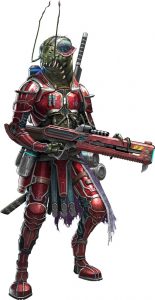 Adding themes to character creation, a sense of your role in the galaxy, and how it modifies and attribute and gives you some additional perks through the game is a terrific way to tweak characters and help further differentiate them without too much needless complexities. Splitting the traditional Hit Points into Hit Points and Stamina Points is another thing I like. Resolve points are interesting, at first, I was unsure about ANOTHER resource to track, but the perks to the game far outweigh the complication. Splitting of Armor Class into Energy AC and Kinetic AC, also very elegant.
Adding themes to character creation, a sense of your role in the galaxy, and how it modifies and attribute and gives you some additional perks through the game is a terrific way to tweak characters and help further differentiate them without too much needless complexities. Splitting the traditional Hit Points into Hit Points and Stamina Points is another thing I like. Resolve points are interesting, at first, I was unsure about ANOTHER resource to track, but the perks to the game far outweigh the complication. Splitting of Armor Class into Energy AC and Kinetic AC, also very elegant.
In general character combat feels like an improvement on Pathfinder, the chapter on Tactical Rules reads very clearly. I was impressed. Starships, specifically starship combat, was a mixed bag for me. The ships look great, the construction rules are interesting. Ship combat… ship combat feels a lot like a mini board game to me. I would have liked a simpler more narrative system with an option to play something more complex like what is presented. And this is not the only place where the rules remain complex.
There are a LOT of feats, and while they all seem fun, the fear of feats soon bloating out of control worries me. Augmentations, magical and physical, are another interesting element that certainly fits the sci-fi model, but also worries me by adding complexity. Unlike Pathfinder, which is a generic fantasy ruleset with hints of the campaign world Paizo would eventually develop, Starfinder is built from the ground up around the setting. That to me is not ideal. I love generic rules with which to create my own worlds. I may be in the minority, and they know their client base, so I’ll deal with it. I can certainly file off the numbers for my own campaign.
I like that spells are capped at 5th level, I’m not sure about the equipment level rule. Seems like and elegant enough solution that equipment has a level at which it is appropriate, but enforcing this in the game seems difficult and unrealistic, at least at face value from just from reading the book! Not that I want reality in a space-fantasy game, I just don’t see my players naturally accepting this meta-game concept easily. My players were also weary of the space-fantasy aspect when I talked to them about the game. The mix did not thrill them. You could again extract the fantasy elements and try to run a more traditional sci-fi game, but it is not simple to do, and ultimately not what the system is built to do.
The Player Character Folio is a terrific combination of character sheet and reference material for the player. It helps organize all the information players need to handle. I wish every RPG had such an accessory. It helps managing characters that will undoubtedly grow in complexity as they level up, and can help the novice player follow along, even if it is a little intimidating.
The Alien Archive is a mixed bag. On the one hand, it has 20+ new races to play in the game, but many antagonists just seem like fantasy creatures with technology tacked on. It reinforces the fantasy tropes much more than the science-fiction elements. Technological demons, dragons, angels and other creatures really fell flat for me. The new creatures, especially the ones that can be player characters are generally cool and interesting, which is this book’s redeeming quality for me. I would have loved to see something more akin to the NPC Codex for Pathfinder.
So, was Starfinder what I wanted? No… It is an improvement on the Pathfinder system. Imaginative, beautifully presented, but still too complex for my taste. It is a 500+ page book, with lots of options and good advice. I would have loved to see more of the game system’s sacred cows die, some bolder design choices, and more risks taken. But who am I to complain! They certainly seem to have caught lightning in a bottle and sold it to the fans once more. Paizo played it safe and created a game for the players that enjoy Pathfinder in a setting and style of play that differentiates it from traditional D&D. That is a smart move! I’m not sure if this was the testing ground for a Pathfinder 2nd edition, or a replacement for it.
Like I said before, if you like Pathfinder this is for you. If you are interested in the science-fantasy genre give it a look, check out the Starfinder SRD (System Reference Document) to get an idea for the rules. It is a fun game with great support. There is a learning curve, but there are a lot of people playing it who can help you along. If this is your first game, you’ll need some help.
Will I play it? Maybe… If I can find the right campaign concept I want to run, and manage to convince my players, maybe I’ll adapt the system. For now, I wait for the next edition of the Pathfinder/Starfinder rules. More streamlined, with options, but not cumbersome, agile and easy to run. Maybe I’m not their core audience right now. I’ll keep buying the ancillary materials and checking out their products. This is certainly an exciting time for sci-fi games!
One last thing before I go dear readers. Are you interested in more coverage of Starfinder and Pathfinder products? I can certainly do more posts about their products. Also, there are some great sci-fi games that have been published recently. Would you like me to review those as well? Let me know in the comments, always looking for your feedback. Have a great weekend!




